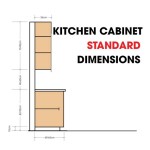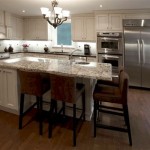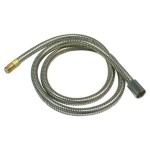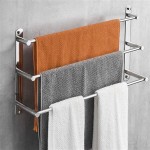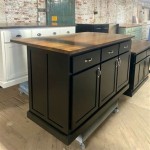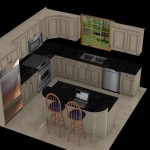Lighting Ideas For Over The Kitchen Sink
Adequate lighting is crucial in any kitchen, and the area above the sink is no exception. It's a space where tasks such as washing dishes, preparing food, and cleaning often occur, necessitating focused and effective illumination. Insufficient lighting can lead to eye strain, potential accidents, and an overall decrease in the kitchen's functionality and aesthetic appeal. This article explores various lighting options designed specifically for over the kitchen sink, considering both functional and design aspects to help homeowners make informed decisions.
Task Lighting: Prioritizing Functionality
The primary purpose of over-sink lighting is task lighting. This type of lighting is specifically designed to provide bright, focused illumination for performing specific tasks. When choosing task lighting for the kitchen sink area, several factors should be considered, including the size of the sink, the overall kitchen layout, and the desired level of brightness.
Recessed lighting is a popular option for over the sink. These fixtures are installed directly into the ceiling, providing a clean and unobtrusive look. Recessed lights can be strategically placed to direct light exactly where it's needed, minimizing shadows and ensuring adequate illumination for tasks. The use of adjustable gimbals allows users to further customize the direction of the light, making it ideal for sinks located in corners or under cabinets.
Pendant lights offer a more decorative alternative to recessed lighting. These fixtures hang from the ceiling and can be chosen to complement the kitchen's overall design. When selecting pendant lights, it's important to consider the size and style of the fixture, as well as the type of bulb used. A single pendant light centered over the sink can provide sufficient illumination, while multiple smaller pendants can create a more visually appealing and balanced effect. The height of the pendant should be carefully considered to avoid obstructing the user's view or head space.
Under-cabinet lighting can also be used to supplement the main over-sink light. These fixtures are installed under the cabinets, providing additional illumination for the countertop and sink area. Under-cabinet lighting is particularly useful for sinks located under overhead cabinets, as it helps to eliminate shadows and create a brighter workspace. LED strip lights are a popular choice for under-cabinet lighting due to their energy efficiency and low profile. It is crucial to ensure that the under-cabinet lighting coordinates with the other light sources in the kitchen to maintain a consistent and balanced illumination throughout the space.
Types of Light Fixtures and Bulbs
The choice of light fixture and bulb type can significantly impact the overall functionality and aesthetic appeal of the over-sink lighting. Various options are available, each with its own advantages and disadvantages.
Recessed lights are often equipped with LED bulbs, which are known for their energy efficiency, long lifespan, and minimal heat output. LED bulbs are available in a range of color temperatures, allowing users to customize the ambiance of the kitchen. Warm white LEDs create a cozy and inviting atmosphere, while cool white LEDs provide a brighter and more task-oriented light. The choice of color temperature depends on the individual's preferences and the overall design of the kitchen.
Pendant lights can accommodate a wider variety of bulbs, including incandescent, halogen, and LED. Incandescent bulbs offer a warm and inviting light, but they are less energy-efficient than LED bulbs. Halogen bulbs provide a brighter and more focused light, but they can generate significant heat. LED bulbs are generally the preferred choice for pendant lights due to their energy efficiency, long lifespan, and versatility in terms of color temperature and brightness levels. The shape and style of the bulb should also be considered, as it can impact the overall aesthetic of the pendant light.
Under-cabinet lighting commonly utilizes LED strip lights, which are easy to install and can be cut to the desired length. LED strip lights are available in a range of colors and brightness levels, allowing users to customize the lighting to their specific needs. Some LED strip lights also come with dimming capabilities, providing further control over the illumination level. Proper installation of under-cabinet lighting is essential to ensure that the light is evenly distributed and that there are no dark spots or shadows.
When selecting a light fixture, the fixture’s material and finish should also be considered. Chrome, brushed nickel, and stainless steel are popular choices for kitchen fixtures due to their durability and resistance to corrosion. The finish of the fixture should complement the other hardware and appliances in the kitchen to create a cohesive and aesthetically pleasing look.
Design Considerations: Aesthetics and Style
While functionality is paramount, the design of the over-sink lighting should also complement the overall aesthetic of the kitchen. The lighting fixture should be chosen to enhance the kitchen's style and create a visually appealing space. Several design considerations should be taken into account when selecting over-sink lighting.
The style of the kitchen should be a primary consideration. For modern kitchens, sleek and minimalist fixtures are often the best choice. Recessed lighting or pendant lights with clean lines and simple designs can complement the modern aesthetic. In traditional kitchens, more ornate fixtures may be appropriate. Pendant lights with decorative shades or vintage-inspired designs can add a touch of elegance to a traditional kitchen. The color and finish of the fixture should also be chosen to match the existing décor.
The size of the kitchen and the height of the ceiling should also be taken into account. In small kitchens, smaller and less obtrusive fixtures are generally preferred. Overly large fixtures can overwhelm the space and make it feel cramped. In kitchens with high ceilings, pendant lights with longer cords or chains can be used to bring the light down to the desired level. The placement of the fixture should also be carefully considered to avoid obstructing the user's view or creating a visual imbalance.
Layering light is an effective way to create a well-lit and visually appealing kitchen. In addition to the main over-sink light, consider adding ambient lighting and accent lighting to the space. Ambient lighting provides overall illumination for the kitchen, while accent lighting highlights specific features, such as artwork or architectural details. Combining different types of lighting can create a more dynamic and inviting atmosphere.
The kitchen's color scheme should also influence the choice of lighting fixtures. Lighter colors reflect more light, while darker colors absorb more light. In kitchens with dark cabinets and countertops, it's important to choose brighter lighting fixtures to compensate for the lack of reflectivity. In kitchens with light cabinets and countertops, softer and more diffused lighting may be sufficient. The overall goal is to create a balanced and well-lit space that is both functional and aesthetically pleasing.
Homeowners should consider the impact of natural light on the kitchen. If the sink is located near a window, natural light can supplement the artificial lighting during the day. However, it's important to ensure that the artificial lighting is sufficient for use during the evening hours or on cloudy days. The type of window treatment used can also affect the amount of natural light in the kitchen. Sheer curtains or blinds can allow natural light to filter through, while opaque curtains or blinds can block out most of the light.
Smart lighting options are becoming increasingly popular in modern kitchens. Smart lighting systems allow users to control the lighting from their smartphones or tablets, and some systems can even be programmed to adjust the lighting automatically based on the time of day or the user's preferences. Smart lighting can offer increased convenience and energy savings, and it can also enhance the overall security of the home.
Proper installation is crucial for ensuring the safety and functionality of the over-sink lighting. It is recommended to consult with a qualified electrician to ensure that the wiring is up to code and that the fixtures are properly installed. Improper installation can lead to electrical hazards, such as shocks or fires. It's also important to follow the manufacturer's instructions when installing lighting fixtures.
Regular maintenance is essential for keeping the over-sink lighting in good working order. Bulbs should be replaced as needed, and fixtures should be cleaned regularly to remove dust and debris. The wiring should be inspected periodically to ensure that there are no signs of damage or wear. By following these simple maintenance tips, homeowners can ensure that their over-sink lighting continues to provide adequate illumination and enhance the overall aesthetic of the kitchen.
The selection of over-sink lighting involves careful consideration of functionality, aesthetics, and personal preferences. By exploring the different options available and considering the specific needs of the kitchen, homeowners can create a well-lit and visually appealing space that enhances both the functionality and beauty of their home.

The 15 Best Over Kitchen Sink Lighting Ideas Lightopia

Aesthetic And Functional Over Kitchen Sink Lighting Ideas

The 15 Best Over Kitchen Sink Lighting Ideas Lightopia

Aesthetic And Functional Over Kitchen Sink Lighting Ideas

39 Best Kitchen Sink Light Ideas Chaylor Mads

Kitchen Lighting Ideas The Home

Over Kitchen Sink Lighting How To Enlighten Your Cooking Space

Lighting Over Kitchen Sink Design Ideas

6 New Small Kitchen Lighting Ideas 1stoplighting

Lighting Above Kitchen Sink Inspiration

